How do horses learn? (Part I)
By: Nestor Imberti Posted: 10/09/2020
Have you ever wondered why horses respond to the rider's cues or aids? Riding at the walk, the trot or the gallop, jumping a fence...
This time, we want to show you the art of horse training based on our experience. We’ll explain how we teach our Peruvian horses to follow any of our signals.
Introduction to horse training
When we take up horseback riding and start to develop a connection with our horse, many of these things seem natural to us: the horse begins to go forward when we press with our legs, stops when we pull the reins, or turns when we pull a single rein.
Although your horse may seem to naturally know that he has to start walking when you press your calves and the heel of your foot, this knowledge is not something that horses were born with.
This means that someone must have taught him that, as well as all the other movements he can do when we are riding him, as I mentioned above.
As simple as this may seem, it took humans thousands of years to get horses to learn to do these things and many more, but I don’t want to bore you with all of them!
I would like to say that horses, by nature, know how to move at a walk, a trot or a gallop. They also know how to jump, stop and turn voluntarily. They are born with these behaviours in their genetic algorithms.
In fact, a new-born foal is able to stand on its legs after being born (30 to 60 m) and in a short period of time, it begins to walk next to its mother and can quickly gallop in case they have to flee from danger.
That is, these movements or behaviours are already incorporated into the horse from birth.
But when we say learn, we mean that the horse executes those movements, already written in his neural connections, when we are on the horse giving him a certain signal.
It means that we are conditioning his natural movements, so that he executes them when we give him a certain signal. But which is the best way to do it? This issue has been up for debate since humans first rode a horse.
This is nothing more than arguing about the most efficient way to communicate signals to the horse and that the horse learns that this signal means, for example, to start out at a walk.
This connection between a signal and the horse’s response, such as the walk, the gallop or a jump, is what we call horse training.
When we asked how horses learn, we meant how they learn to respond to the cues we give them when we ride them, when we lead them with the rope or when we want to load them into a trailer; it's all about the way we, humans and horses, communicate.
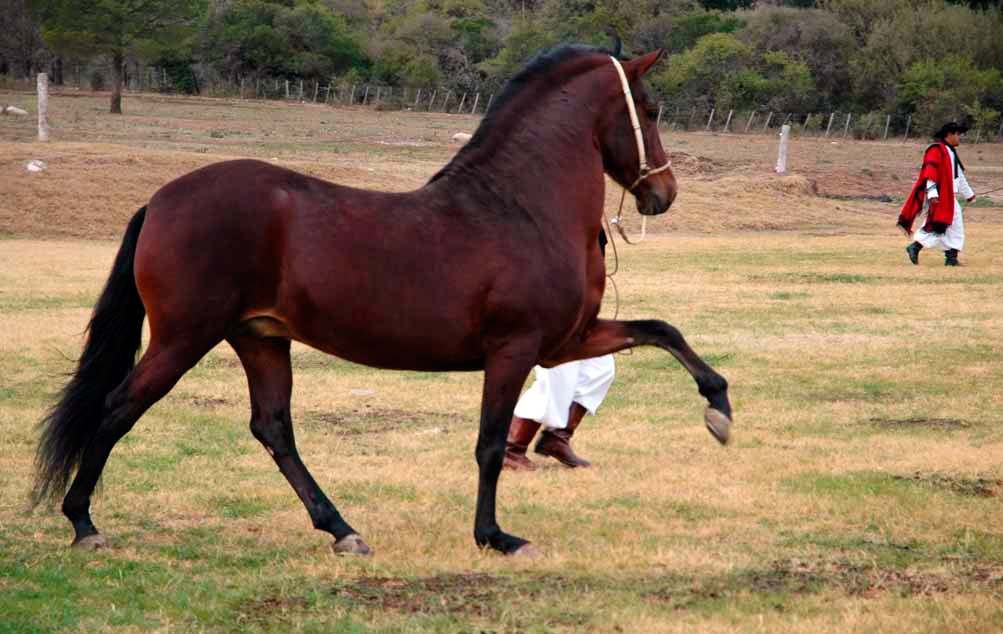
What is the best method to teach a horse?
The topic is very broad, because our horse also learns many things by habituation. One of those things is when he lets you mount him, something we don’t cue him to do, but if we do it in a certain way, he will accept the rider without bucking or using his fight-or-flight response.
When humans first began riding horses, this issue we have just described as a problem statement: "How Horses Learn", was solved in many different ways, with different results.
Many times, the indiscriminate use of violence prevailed. Unfortunately, this situation continues to this day and is the case of several horse trainers, especially in rural areas.
In several cultures, people used observation to try to interpret how horses could get used to humans. In that sense, they detected that the most important thing was trying to prevent the horse from running away. That is the external expression of the strongest emotion that the horse experiences: fear.
The fight-or-flight instinct is part of the horse’s evolutionary process. This natural response entails a very special sensitivity that, among other things, has helped horses survive the threats posed by predators.
Would you like to be part of a group with an equestrian soul?
Join the Ampascachi Community. Obtain exclusive benefits for your holidays.
We tell you how to start, train and take care of your horse.
Interviews with direct providers of riding tours around the world.
Opinions of outstanding equine scientists and personalities in the equestrian sport world.
The contribution of science to understanding horses
The history of horsemanship has been laid out through historical masters since the times of Xenophon (450 BC), a Greek soldier, historian and philosopher, who wrote the two oldest and most famous treatises on horsemanship, Peri Hippikes and Hipparchikós, in which he laid the foundation for dressage and horse training.
After that, there were many other great masters in the sixteenth, seventeenth, eighteenth and nineteenth centuries, such as Count Cesare Fiaschi, Federico Grisone, Giovanni Battista Pignatelli, Antoine de Pluvinel, William Cavendish, François Robinchon de la Guérinière and D’Aurbergne François Baucher.
Since then until today, including horsemen who train horses in rural tasks and using other more popular methods such as horse whispering, natural horsemanship, etc., the question has always been the same:
What is the right way to start and train a horse?
In my opinion, this issue began to be settled when it became a subject matter of science.
This is how the research studies carried out by Ethology, a science that studies animal behaviour especially as a result of the evolutionary process, laid the foundations for the principles of Learning Theory applied to horses. On top of that, a distinguished group of scientists studied the learning process in horses and other types of animals, domesticated by man or not. They based their studies on theories of human behaviourism, as explained by Skinner and Watson, or the studies conducted by Pavlov and others were giving the basics to the principles of the Theory of Learning applied to horses.
At present, we can highlight Australian Zoologist Andrew McLean, McGreevy and many others, who have helped set the scene for the scientific principles that apply in horse learning.
Although the different techniques used by the classical masters of equitation and those that I have just mentioned follow these principles partly, they are not sufficient to create a theoretical framework. On the other hand, thanks to the application of Learning Theory in Horses, we can now explain the complexity of equine behaviour, and that knowledge can be transmitted to different people.
In addition, the heap of scientific data that has given the foundations to the principles of Learning Theory in horses is constantly advancing in the scientific field. In accordance with that, you can train and teach horses to learn in a safe way, taking special care of their well-being.
In this article, I will talk about the main theoretical foundations, in a very summary way, so that you become aware of their existence. If you are interested in learning more, you can read other articles such as The application of learning theory in horse training written by Andrew McLean and Janne Winther Christensen in the Sevier.
Another website that I recommend is that of ISES (International Society for Equitation Science) where you will find the principles and concepts on horses that science is contributing through the congresses organized by the association every year.
My personal quest to teach horses
You probably know that there is a lot of literature on different ways to break in or train a horse. Today you can find different names such as Rational Training, Natural Horsemanship, Native Training Methods, etc.
I want to tell you that I have studied the fundamentals of all these training methods, through books by different authors and courses taught by some of them, and I must say that they are a significant breakthrough, in the sense that none of them uses violent methods. However, they do not provide, at least in my opinion, a complete and concrete description of how we can teach horses and, above all, how to carry on with the step-by-step training process.
This issue had puzzled me until over 15 years ago, when I came across a book that opened my mind completely and gave me very clear and concrete science-based concepts on how horses are, how they learn and what you can teach them.
By this, I do not mean that this book works like the sacred scriptures, which in ancient times constituted the sources where men found answers to the various ethical and existential problems they faced. By raising the problem with a very solid argumentation, the book gave me the possibility to continue on that scientific path in order to deepen my knowledge about the subject.
Soon after that, on our Peruvian horse ranch, we decided to put the theoretical principles into practice.
To do this, we developed a protocol to start and train horses totally based on these principles, which immediately began to pay off. We were excited to see how the horses learned, without having to resort to questionable methods promoted by some trainers who say they know or understand communication with horses, without being able to explain how and why they do it.
Since then, our horses have been trained only by people who received our instructions exclusively, using the principles and practices derived from the Learning Theory, a subject that is in continuous theoretical evolution.
The book I mentioned is called "The Truth about Horses".
I must confess that looking at the title, I thought it was a rather presumptuous book, for absolute truth is never attained in science and it can be modified by a new discovery.
But that defiant title made me buy the book immediately and when I read it, all my confusion disappeared.
Thanks to this book, I found the scientific evidence to understand the brain of a horse and how it works, his natural behaviours, and how the processes of learned behaviours work in horses. I also learned how to put those concepts into practice, step by step, in order to manage to break in or train a horse from start to finish. Thus, the result of that process is a horse that is safe and reliable for the rider, without forgetting about the horse’s well-being.
The Principles of Learning Theory in Horse Training
When we want to train an animal, we must learn about its natural evolution, behaviour and biology, as veterinarians do.
In the graph below, we will briefly explain the theoretical framework on which the Principles of Learning Theory are based. In that way, you can break in and train a horse on the basis of scientifically sound knowledge.
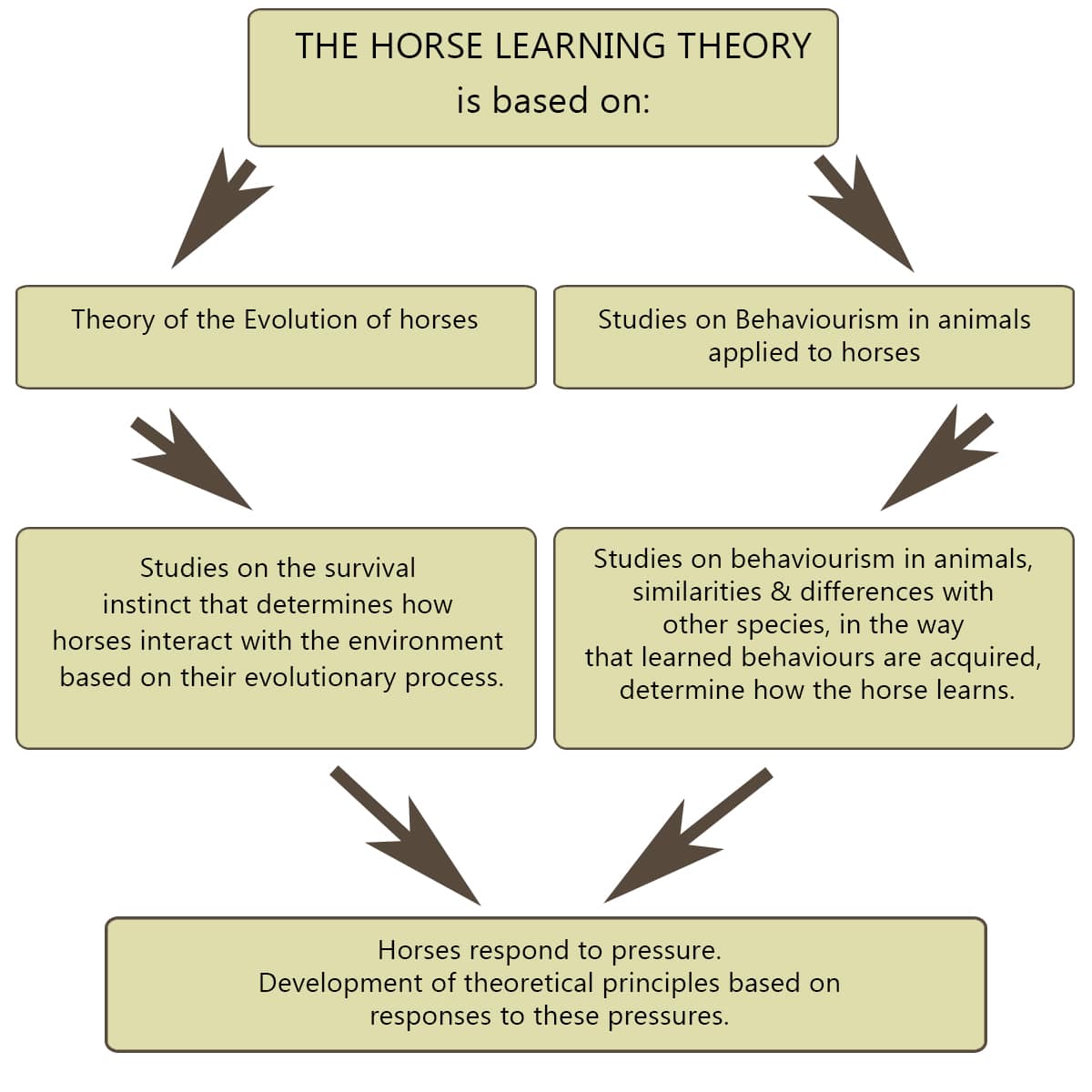
The Theory of Evolution in the horse
The theory of evolution, first formulated by English naturalist Charles Robert Darwin, stated that all species of organisms have evolved over time from a common ancestor through a process called natural selection.
Natural selection is the differential survival and reproduction of individuals, according to their genetics, and it generally results from a reproductive advantage over the environment.
There is natural selection when there are differences in biological efficacy among the individuals of a population.
Biological efficacy can be broken down into components such as survival, fertility, etc. (the best adapted organisms will survive).
Horses evolved as prey animals. They are social herbivores, and their biology is constituted according to these needs. Therefore, their fight-or-flight instinct is highly developed, so much so that a new-born foal can stand up, run or flee, in case a predator appears.
In view of this, we can conclude that there are big differences between a human brain and the brain of a horse, because their evolutionary processes were totally different.
The equine brain
The brain of a horse is 9 cm long by 6 wide and, unlike the human brain, it does not have a developed frontal lobe, which is responsible for higher-level cognitive functioning such as reasoning.
The horse’s nervous system is different and species-specific, and it has enabled horses to survive. As we said, horses are prey animals with a well-developed fight-or-flight response.
This concept of anatomical and functional distinctions between the human brain and the equine brain must be very clear. The horse does not think or reason, he is genetically programmed for his place in evolution. Therefore, we must understand the processes that occur in horses. (Photos 2 and 3).

Photo 2: Equine brain, you can see the poor development of the frontal lobe.
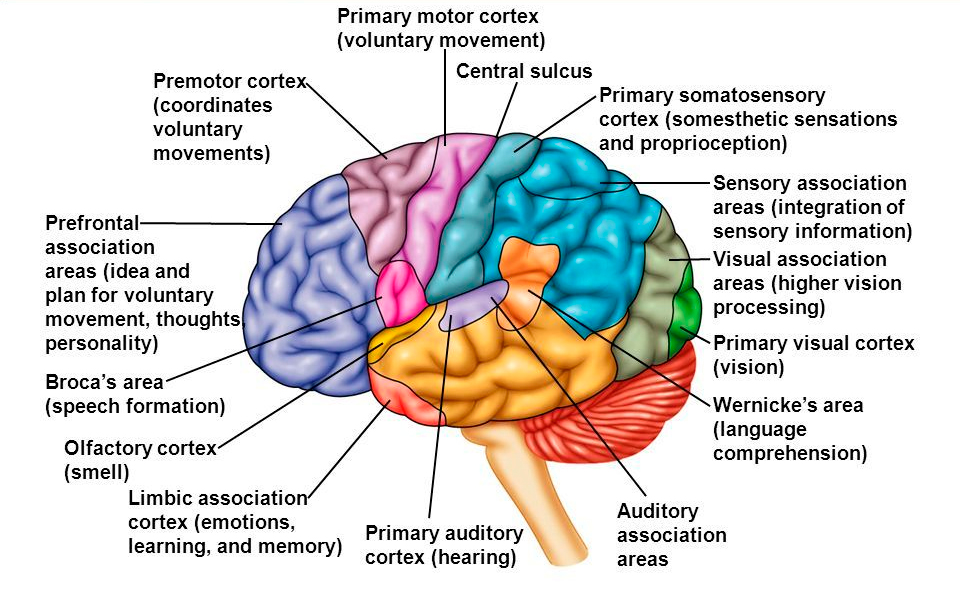
Photo 3: Human brain: we can see the development of the frontal lobe.
To better understand this, we will describe the criteria used for indicating the existence of higher mental faculties, including a basic reasoning capacity in animals.
Through these criteria, we should be able to verify the following facts:
- Imitate a motor behaviour, exhibited by another animal.
- The ability to solve new problems on the first attempt.
- The ability to find shortcuts in a maze; this is spatial knowledge.
- The ability to form abstract concepts.
Horses have none of these characteristics, but they have developed others, which are necessary for survival. They are:
- Repetition of movements or habits for an immediate reaction. Habits are stable and they only change through conditioning.
- Habits are learned more quickly; an example of this would be the fact that a new-born foal is able to run away from danger.
- Forging behaviour and feeding habits help minimize energy expenditure.
Higher mental processes need much more energy.
These evolutionary characteristics must be understood and taken into account when training a horse.
"Horses are incapable of having complex thoughts due to their mental constitution.”
They can't tell the difference between good and bad; they can't feel love or hate the way humans can.
Consequently: "They will never see humans as members of their species".
On the other hand, horses can feel fear, experience emotions and learn new habits quickly.
Subscribe to the Ampascachi Community and obtain benefits and exclusive content. Furthermore, we offer free advice on horses and equestrian tourism.
Instincts in Horses
The flight instinct
Of the many instincts that a horse has, such as eating, fighting, mating, etc., the fight-or- flight instinct is deep-rooted because horses are prey animals.
This instinct is more evident when the horse needs to flee from danger or an uncomfortable situation. The more they practice this behaviour, the more the nerve connections that provoke it are consolidated.
This behaviour is the one that most interferes with the horse’s training.
Horses always move their legs to express their fear. By reducing or removing this behaviour through training, we will get our horse to respond to our stimuli accurately. The fight-or-flight instinct will vary according to the horse breed and when the horse shows that response, his body and muscles tense.
We must pay attention to these signs of light tension:
- The horse’s back sinks and tenses.
- He keeps his neck and head in a higher position.
- His eyes are wide open.
- His nostrils are more open.
- The horse swishes or lifts his tail, or keeps it between his hind legs.
- He takes faster and shorter strides.
The continuation of these signs may lead to the following erratic behaviours:
- Fright, sudden lateral movements.
- Bolting or running away.
- Bucking, the horse lowers his head between his front legs and kicks out.
- Rearing, the horse stands on his hind legs.
These reactions should be avoided in all possible ways through training (Photos 4, 5 and 6).
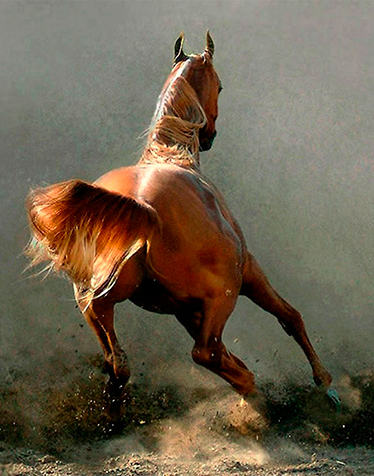
Photo 4: Horse showing his fight-or-flight instinct; his tail is lifted and his legs are moving fast.
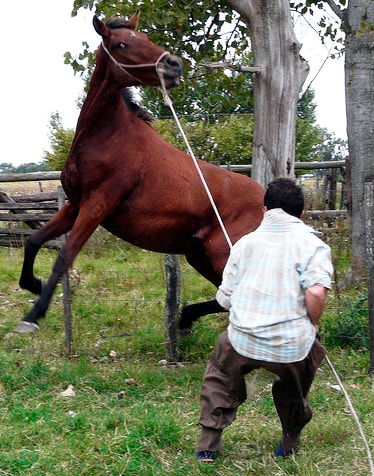
Photo 5: Horse showing his fight-or-flight instinct; he is standing on his hind legs with nostrils and eyes wide open.

Photo 6: The horse bucks to get rid of the rider.
The hierarchy
Horses live in groups or herds as a form of protection, but they also have to compete with one another for resources when they are scarce. For example, when feeding or mating. For this reason, within the group, a certain hierarchy scheme is established, which can be seen in the dominance instinct when horses are competing for resources, as we said. Although horses often have the need to prove their dominant position, this confrontation is usually in the form of simple demonstrations and threats – typical of wild horses – as a matter of social behaviour.
They instinctively know the position of each member within the group or herd, and behave accordingly.
This dominance-submission issue, which is more evident when they compete and which may lead some members of the herd to skip the social hierarchies, has led many horse trainers to use this feature for training purposes.
Therefore, they propose training horses in such a way that they think we are the boss or leader (notion derived from the idea of dominance) of the herd, but this is not so. The horse will never see us that way. We must bear in mind that his brain is different and he cannot see us as an equal.
We have never seen a herd of runaway horses following this alleged "human leader".
Among other things, this human leader could not keep up with the herd or keep the distance so as not to be run over.
Through this ironic example, we want to prove that the interactions between men and horses cannot be based on the idea of the horse seeing men as "leaders".
This idea of training horses through dominant hierarchies leads to the concept of: "Horses must learn who is in charge and understand what their position is".
This thought has no scientific support, simply because it has not been proven that the behaviours arising from the relationships among horses of a same herd, can be replicated in the interaction between a horse and a human being.
Flight Initiation Distance
This is the maximum approach distance of a potential predator that the horse will allow before running away.
The closer humans get to a horse, the greater his tendency to flee.
During training, we must avoid this. If the horse flees, we shouldn’t move backward, but take a step forward.
The horse’s flightiness will be reinforced if the trainer walks away, and he will repeat this behaviour in similar situations.
On many occasions, the horse tries to flee, but we must not let him do that, without forgetting safety.
For example, if we want to touch the horse’s head, especially in the area between his ears or his forehead, he will start to move his head in all directions, trying to get rid of our hand.
What we must do is keep our hand there until the horse gets used to it.
In other words, if the horse flees or moves away, that behaviour is being reinforced, because he relieves his fear – the strongest emotion of his species. Consequently, when this happens two or three times, that behaviour is engraved in his memory in an indelible way.
Herd instinct is the natural behaviour of horses to live and move in family groups around a given territory.
This herd instinct can be useful in horse training. For example, when we teach them how to cross a creek or move through complicated places which horses would instinctively avoid.
In such cases, if other horses cross the creek or bypass the complicated place, the new horse will follow them by "herd instinct". But in order to achieve this, horses must be very close together. Otherwise, his herd instinct decreases.
Reflecting on horses
Horses can be used for sport or recreational purposes. In any case, horse lovers have a special relationship with them and we must reflect on that. To love truly, we must accept others as they are, with the things they CAN do and without expecting them to do the things they CANNOT do.
Based on this reflection, we must say that, so far, the scientific evidence that we have indicates that the brain of the horse is not capable of complex or basic reasoning. However, his brain has evolved according to his gregarious herbivore condition and this fact has given him the ability to develop certain behaviours. Such behaviours or habits have some advantages over higher mental processes and we must be clear about this, so that our interaction with them does not result in suffering or discomfort.
Some advantages of behaviour patterns over complex reasoning include:
- These behaviour patterns allow for immediate reactions and this is very important for prey animals like horses.
- Habits are stable and we can only modify them through conditioning.
- Habits are learned more quickly. This is very important in the case of animals that have the need to escape from danger as soon as they are born.
- Unlike complex reasoning, habits are an energy-saving mechanism.
You can continue to read the second part of the article here.
Are you passionate about horses, too? Do you want to learn how to train them?
Download our free guide on Horse training step by step. There we tell you everything we have learned about horse training in more than 25 years of experience.
And if you want to be a professional horse trainer and get field-based training, you should check out our training program. You will have the opportunity to live in our equestrian centre and experience our full training process with young horses.
~
THIS COULD ALSO BE INTERESTING
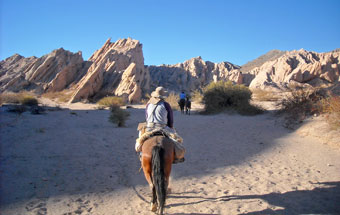
Visiting Northern Argentina on Horseback
Travelling around the north of Argentina on horseback offers you some wonderful options. Riding a horse, you will go through the awesome landscapes of the Calchaqui Valleys.

Horse feeding
Horses are herbivorous animals with a delicate digestive system. Knowing how to feed them correctly is fundamental to avoid the occurrence of diseases.
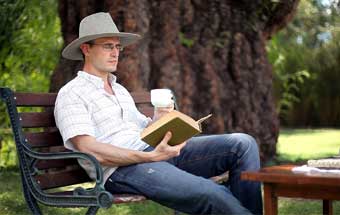
Improve your leadership qualities with horses
Being with horses gives us positive feelings, increases our self-esteem, improves our understanding of body language and empowers our confidence that we can reach our goals.
~
WHAT IS YOUR OPINION? LEAVE A COMMENT
Your comments
Excellent articles, they are very useful and very easy to understand, very practical.
It's always interesting to learn something you like. I grew up riding horses. I go riding with friends and my purpose today is to know more about horse behavior and training. Thanks, best regards.
Planning your horse riding holidays?
Join the Ampascachi Community. You will get exclusive advantages and guidance for your next horse riding holiday.


 German
German French
French Spanish
Spanish